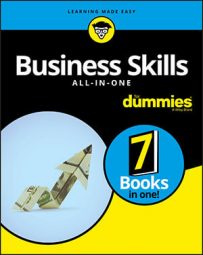Suppose you're a dentist who's taking over a practice and you're writing to introduce yourself to your predecessor's patients. Your basic goal is to maintain that clientele. You needn't know the people to anticipate many of their probable concerns. You can assume, for example, that your news will be unwelcome because long-standing patients probably liked the old dentist and dislike change and inconvenience, just like you probably would yourself.
You can go further. Anticipate your readers’ questions. Just put yourself in their shoes. You may wonder
- Why should I trust you, an unknown entity?
- Will I feel an interruption in my care? Will there be a learning curve?
- Will I like you and find in you what I value in a medical practitioner — aspects such as kindness, respect for my time, attentiveness, and experience?
Plan your content to answer these intrinsic questions and you can't go wrong. Note that nearly all the questions are emotional rather than factual. Few patients are likely to ask about a new doctor's training and specific knowledge. They're more concerned with the kind of person he is and how they'll be treated. This somewhat counterintuitive truth applies to many situations. The questions are essentially the same for an accountant or any other service provider.
When writing, you may need to build a somewhat indirect response to some of the questions you anticipate from readers. Writing something like “I’m a really nice person” to prospective dental patients is unlikely to convince them, but you can comfortably include any or all of the following statements in your letter:I will carefully review all your records so I am personally knowledgeable about your history.
My staff and I pledge to keep your waiting time to a minimum. We use all the latest techniques to make your visits comfortable and pain-free.
I look forward to meeting you in person and getting to know you.
I’m part of your community and participate in its good causes such as …
Apply this strategy to job applications, business proposals, online media, and other important materials. Ask yourself, whom do I want to reach? Is the person a human resources executive? A CEO? A prospective customer for my product or service? Then jot down a profile covering what that person is probably like as well as her concerns and questions.
Everyone has a problem to solve. What's your reader's problem? The HR person must fill open jobs in ways that satisfy other people. The CEO can be counted on to have one eye on the bottom line and the other on the big picture — that's her role. If you're pitching a product, you can base a prospective customer profile on the person for whom you're producing that product.If you're an entrepreneur, building a detailed portrait of your ultimate buyers is especially important to your success. The more you know about your prospects, the better you can deliver what they need.

